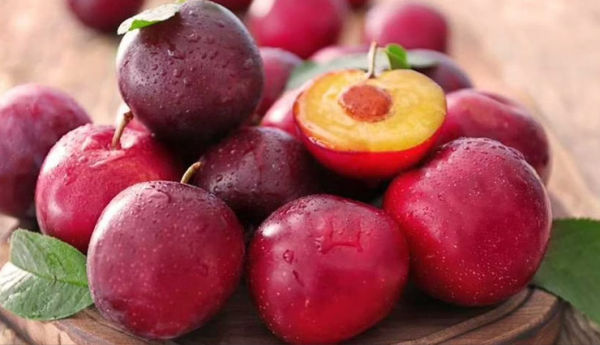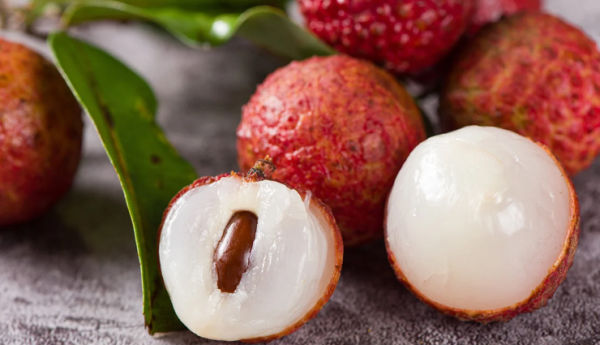

Malic acid is a naturally occurring compound produced by the human body when sugar or carbohydrates are broken down into energy. It is also found in various fruits and vegetables.
Although malic acid may not be widely known, it is just as effective as citric acid. In many fruits and vegetables, it plays a dominant role, contributing to their tart, sour, or bitter taste.
Numerous pharmaceutical companies produce malic acid supplements to enhance sports performance, treat kidney stones, and alleviate dry mouth. The cosmetic industry also uses malic acid in creams and lotions to reduce signs of aging, treat acne, remove dead skin cells, and promote skin hydration. Here's a look at foods that are naturally rich in malic acid.

# Apple
Malic acid is the predominant organic acid in apples, surpassing citric and tartaric acids. Research indicates that malic acid constitutes about 90% of the total organic acids in apples, with citric acid present in much smaller amounts.

# Watermelon
Studies have shown that the juicy, fleshy part of watermelon is naturally rich in malic acid, particularly in both red and orange-yellow varieties.

# Banana
Naturally ripened bananas have malic acid as the main organic acid, with citric and oxalic acids present in smaller quantities. Malic acid occurs in soluble forms like potassium or sodium salts in bananas.

# Lemon
While citric acid is the dominant acid in lemons, malic acid is also present in significant amounts. Research reveals that both the pulp and leaves of the lemon contain malic acid, alongside other compounds like amino acids and sugars.

# Guava
The Encyclopedia of Food Sciences and Nutrition states that guava is abundant in malic acid, as well as other organic acids like ascorbic, glycolic, and citric acids. These acids contribute to guava's tart flavor and low pH.

# Blackberry
Blackberries are nutrient-dense fruits, and a study of 52 varieties found that malic acid makes up between 5.2% and 35.3% of their total acids, amounting to about 280 mg per 100 grams.

# Apricot
Apricots, round yellow fruits with a tart flavor similar to plums, rank sixth in a survey of plants rich in malic acid, containing 2.2% of the acid.

# Plum
Plums, packed with antioxidants and vitamins, have malic acid as a dominant organic acid, according to a study published in Foods. Quinic acid is also present in significant amounts.

# Cherry
This small red fruit, beneficial for heart health and bone strength, contains malic acid, which plays a key role in its sour and sweet flavor. Glucose contributes only minimally to the overall taste.

# Kiwi
Kiwi, known for its sweet and tangy flavor, contains a high amount of organic acids, primarily malic and citric acids, similar to other berries like red gooseberries and black currants.

# Grapes
Grapes, available in multiple colors, are beneficial for eye, heart, and skin health. They contain L-malic acid and tartaric acid as the primary organic acids, particularly in grape juice.

# Mango
Mangoes are rich in organic acids, polyphenols, vitamins, and minerals. Malic and citric acids are the primary acids responsible for the fruit's acidity, as per a study.

# Lychee
Lychee, a subtropical fruit popular in Asia, contains malic acid in abundance, alongside other organic acids like tartaric and ascorbic acids, contributing to its unique flavor and health benefits.

# Orange
Both malic and citric acids are the primary organic acids in oranges, determining the fruit's acidity. Other acids, including tartaric and benzoic acids, have also been identified.

# Peach
Peaches, juicy and soft fruits found in regions like the Himalayas, are good sources of malic acid, offering potential health benefits when ripe.

# Pear
Pears, known as 'nashpati,' are high in antioxidants and support weight loss and diabetes management. Malic acid and citric acid are the main acids in pears, contributing to their taste.

# Strawberry
Malic acid, along with citric and ellagic acids, is responsible for the acidic taste of strawberries. Research shows that the combination of malic and citric acids constitutes the total organic acids in the fruit.

# Pineapple
Ripe pineapple is rich in malic acid, which makes up 33% of the fruit’s acids, alongside citric and ascorbic acids, giving it a sour taste.

# Gooseberry
Gooseberries, or 'amla,' are known for their antioxidant properties and cancer-fighting effects. The fruit contains 10-13 mg of malic acid per 100 grams, contributing to its tart taste along with citric and shikimic acids.

# Raspberry
Raspberries are a good source of dietary fiber and organic acids like malic acid, oxalic acid, and fumaric acid, with malic acid helping to clear dead skin cells and prevent dry mouth.

# Broccoli
Broccoli, a source of various essential nutrients, also contains malic acid, which helps in energy production, reducing muscle fatigue, and boosting endurance.

# Potato
Fresh potatoes are a good source of malic acid, although the concentration decreases as the vegetable ripens. Potatoes are also rich in antioxidants, vitamin B6, and vitamin C.

# Pea
Peas contain malic, citric, and lactic acids, with 100 grams of peas providing around 7.4 mg of malic acid. The concentration of these acids increases when peas are cooked without water.

# Beans
Beans, rich in fiber and vitamin B, contribute to blood glucose regulation and improved cholesterol levels. A study shows that beans contain 98.9% malic acid, as measured by liquid chromatography.

# Carrot
Carrots are high in potassium, vitamin A, D, and B6. Carrot juice, which is popular for its health benefits, contains malic acid as the primary organic acid, while citric acid is present in much smaller amounts.

# Tomato
The organic acids and sugars in tomatoes contribute to their flavor. Unripe tomatoes contain higher levels of malic acid, with its concentration changing as the fruit ripens.

# Corn
Corn contains malic acid in amounts ranging from 0.8% to 1.8%, along with small amounts of oxalic and citric acids. Research indicates that organic acid levels increase when corn is grown with a nitrate substrate.